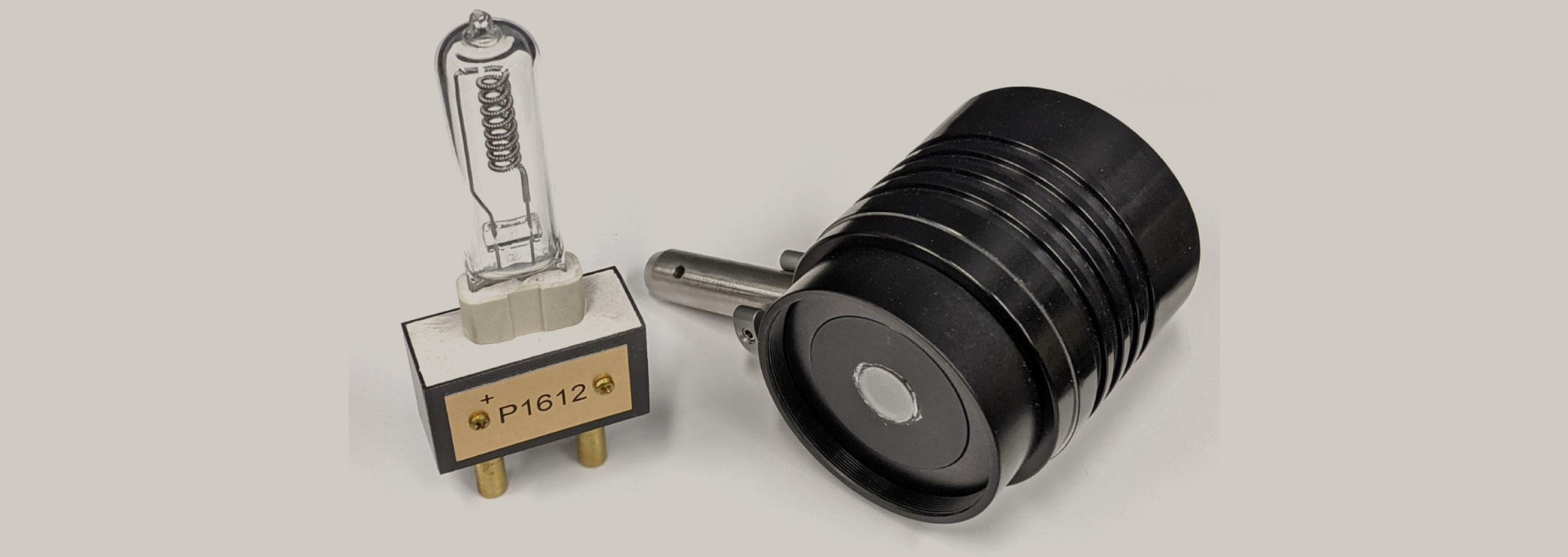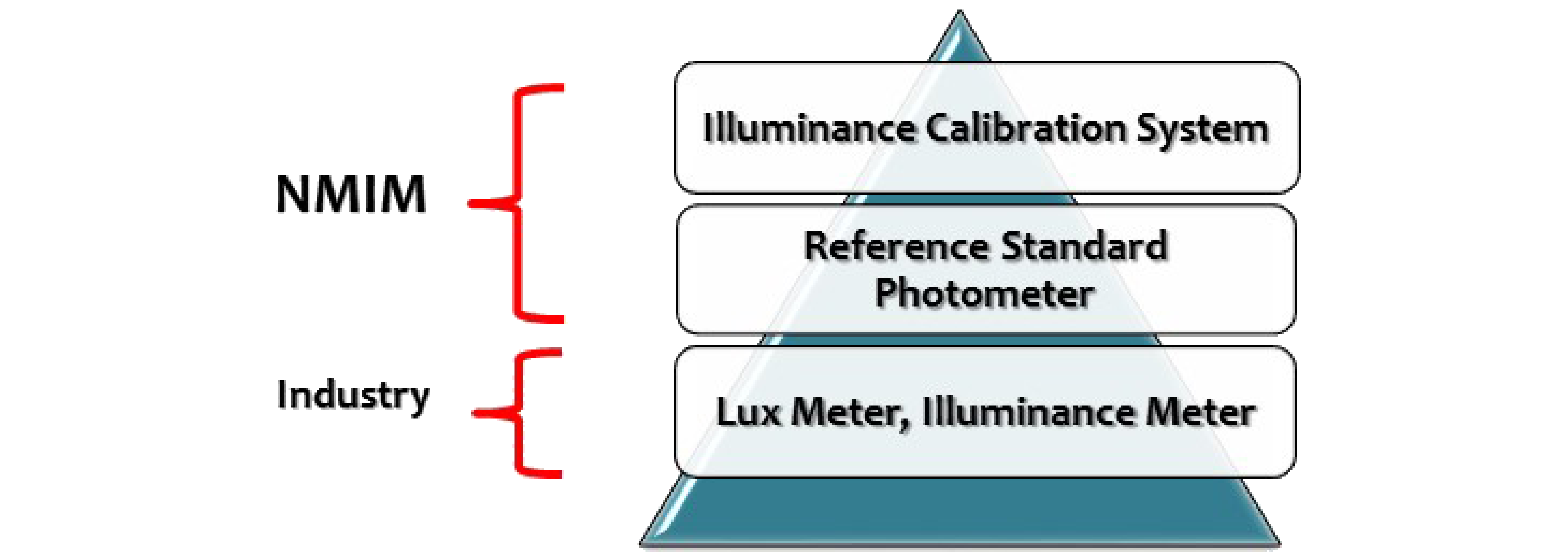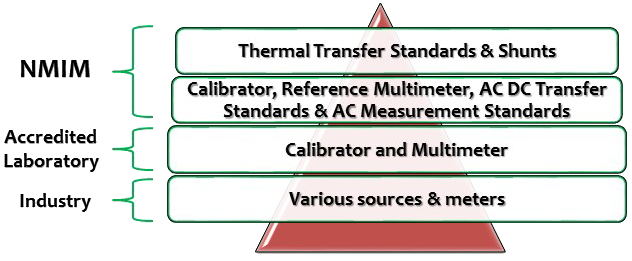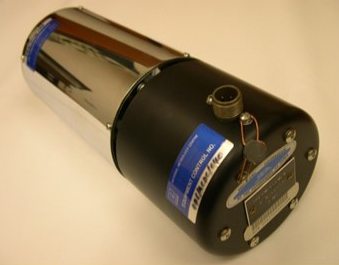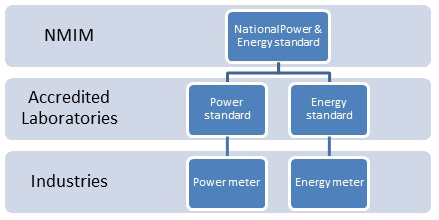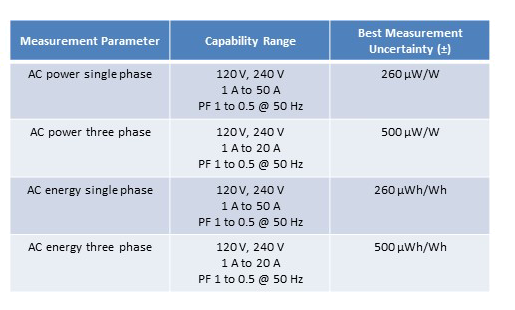Scientific Metrology
- High Voltage
- RF & Microwave
- Resistance
- Vibration
- Acoustics
- DC Voltage
- Magnetics
- Capacitance & Inductance
- Photometry & Radiometry
- AC & Low Frequency
- Time & Frequency
- Power & Energy
The high voltage and high current capabilities in the laboratory are described as follows:

Systems | Parameter | Capability Range | Best Measurement Uncertainty (±) |
Impulse High Voltage | Peak Voltage Time | 50 kV - 500 kV | 1.1% 3.90% |
AC High Voltage | AC High Voltage | 5 kV - 200 kV | 0.66% |
DC High Voltage | DC High Voltage | 5 kV - 150 kV > 150 kV - 270 kV | 0.10% 0.60% |
Current Transformer | Ratio Error Phase displacement | Primary current: 5 A - 2000 A; Secondary current: 5 A | 0.05% 0.8' |
Voltage Transformer | Ratio Error Phase displacement | Primary voltage: 3.3 kV - 11 kV; Secondary voltage: 110 V | 0.05% 0.8' |
RF power and scattering parameter or S-parameter are the quantity associated with microwave measurements where the services are offered by the laboratory to support national RF and microwave measurements activities. Measurement frequency capability starts from the range of 10 MHz up to 18 GHz. The measurements are limited to Type N and PC7 connectors. The estimated uncertainties for RF power and S-parameter are described as follows:
| Parameters | Uncertainty (±) | |
| RF power at 1 mW | : | 2.0 % to 2.4 % |
| Reflection Coefficient | : | 0.015 |
| Attenuation | : | 0.2 to 3.5 dB |


Resistance laboratories provide the measurement traceability for resistance as well as development and maintenance of national physical standards for resistance. The laboratories provides calibration measurements with capability from 1 mΩ to 1 TΩ. The National Standard of Resistance is a 1 Ω and 10 kΩ resistors kept in an oil bath at temperature of 23°C ± 0.001°C. The reference standard resistor is calibrated at BIPM on a regular schedule and disseminate to other resistors by using the automated DCC bridge at range of 1 mΩ to 10 MΩ. Resistance values below 1Ω achieved by using Direct Current Comparator Bridge with a Range Extender. The system has ratios up to 1000:1 with the relative uncertainty of 10-6. The resistance values from above 10 MΩ are scaled up using a modified Wheatstone bridge by replacing Resistive arms with 2 DC Voltage. The resistance laboratories dissemination, capability and uncertainty are shown in following table and diagram respectively.
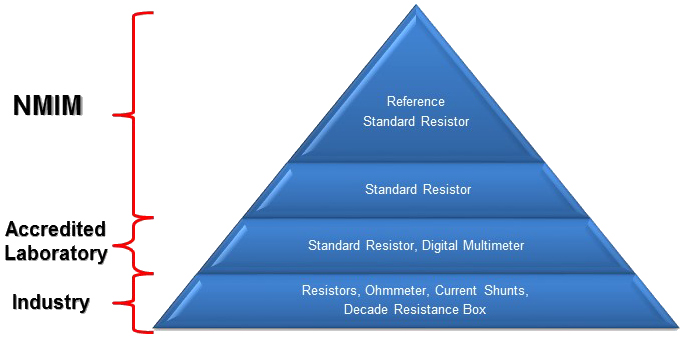
| DC Resistance | : |
|
| Best Measurement Capability | : | ±0.5 mΩ/Ω to ± 585 mΩ/Ω |
| DC Current Shunt | : | 1 A to 100 A |
| Best Measurement Capability | : | ±5 mA/A to ±100 mA/A |
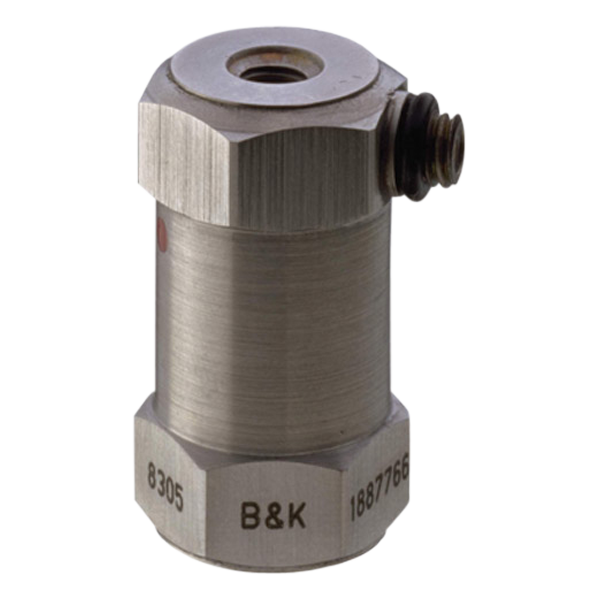
Vibration Laboratory has developed high accuracy capability to support national vibration and shock measurement activities. The chart illustrates the traceability for vibration measurement in Malaysia.
The highest reference standard established is laboratory standard accelerometer B&K 8305 that is maintained using Laser Interferometry Calibration System. The frequency range is from 5 Hz to 10 kHz with the best uncertainty of 0.4%.

Acoustic Laboratory has developed high accuracy capability to support national acoustics measurement activities. The chart illustrates the traceability for acoustics measurement in Malaysia.
The highest standards are 1-inch laboratory standard microphone (LS1P) and ½-inch laboratory standard microphone (LS2P) that are maintained using Reciprocity Calibration System. The frequency range is from 20 Hz to 25 kHz with the best uncertainty of 0.04 dB at 1 kHz.
 Voltage Laboratory has developed high accuracy capability to support national voltage activities. The chart illustrates the traceability for voltage measurement in Malaysia.
Voltage Laboratory has developed high accuracy capability to support national voltage activities. The chart illustrates the traceability for voltage measurement in Malaysia.
The traceability of DC voltage standard to SI unit is realised by using Josephson Junction Voltage system in the range of 1 V, 1.018 V and 10 V with best uncertainty at 0.2 mV.
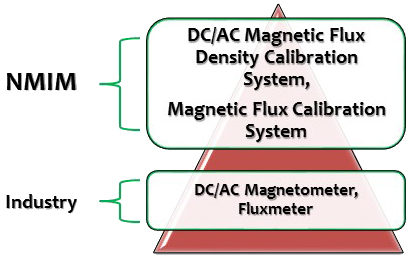 Magnetics Laboratory has developed high accuracy capability to support national magnetics measurement activities. The chart illustrates the traceability for magnetics measurement in Malaysia.
Magnetics Laboratory has developed high accuracy capability to support national magnetics measurement activities. The chart illustrates the traceability for magnetics measurement in Malaysia.
Calibration of magnetic field measurement devices in the range of 0.1 mT to 20 mT performed in a Helmholtz coil. An electromagnet used to generate DC magnetic fields and perform calibrations in the range of 100 mT to 1.6 T. AC magnetic flux density calibration is being offered in the range of 1 µT to 0.5 mT at 50Hz to 20 kHz. Calibration of fluxmeter is also provided in the range of 1 mWb to 10 Wb.

In capacitance measurement, there are two types of national capacitance standards maintained; toroidal cross capacitor (1 pF) and fused-silica standard (1, 10, 100 pF). The 1 to 100 pF standard capacitors are used to calibrate the high precision capacitance bridge. Customer standards are calibrated by direct and substitute calibration method using a precision bridge.

SERVICES PROVIDED :
The capacitance measurement services:
- Low loss capacitor; fixed value
1 pF - 1000 pF at 1 kHz, 1592 Hz - Dielectric capacitor (e.g. mica, polystyrene)
1 µF - 100 µF at 1 kHz - Decade Capacitance
100 pF to 1 µF - Capacitance meter
1 pF to 1 µF - Dissipation Factor
5X10-6 to 1X10-4
The capacitance measurement services:
- Low loss capacitor; fixed value
1 pF - 1000 pF at 1 kHz, 1592 Hz - Dielectric capacitor (e.g. mica, polystyrene)
1 µF - 100 µF at 1 kHz - Decade Capacitance
100 pF to 1 µF - Capacitance meter
1 pF to 1 µF - Dissipation Factor
5X10-6 to 1X10-4
Photometry and Radiometry Laboratory has developed high accuracy system to support national illuminance scale. Illuminance scale is one of the fundamentals in the realisation of candela in optical radiation. The chart illustrates the traceability for illuminance parameter measurement in Malaysia.
AC & Low Frequency Laboratory are capable to generate and measure DC to 10 MHz and beyond covering voltage, current, and resistance parameters to support national AC & Low Frequency measurement activities. The chart illustrates the traceability for AC & Low Frequency in Malaysia.
The highest standards are primary Thermal Converters and AC DC Shunts maintained by utilizing comparison method of AC-DC. Different comparison methods for accurate RMS value determination of AC Voltage and AC Current at low frequencies are traceable to the national standard of AC Voltage and Current. The frequency range is from 10 Hz to 1 MHz with best uncertainty of 5 uV/V.
NMIM’s Time and Frequency laboratory maintains two high performance and three standard performance Caesium (Cs) atomic reference frequency standards. One of the high performance Cs reference frequency standards is designated as Malaysian National Frequency Standards (MNFS), with accuracy of ± 5 × 10-13 s .
With these standards and continuous All-in-View GPS time comparisons, where the data is contributed to Bureau Weights and Measures (BIPM) for the generation of the International Atomic Time (TAT) scale. NMIM is capable to provide traceability to the SI Unit of time interval for time and frequency measurement.
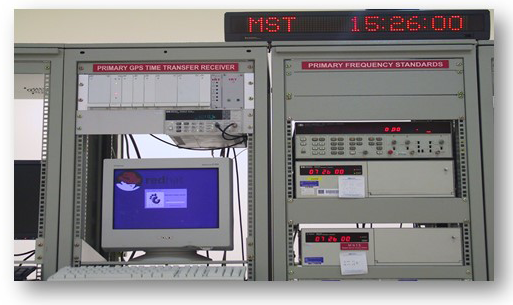
Malaysian Standard Time (MST) is UTC (NMLS) + 8 Hours, due to the time zone selected which is the longitude of 1200 East. UTC (NMLS) is currently defined to be the epoch of the 1 pulse per second timing signal output at the rear panel of the Malaysian National Frequency Standards. NMIM steers the frequency of the standard to maintain UTC(NMLS) to be within approximately 1 ms of the Coordinated Universal Time (UTC).
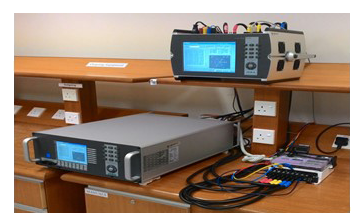
AC power and energy standard are maintained by Power/Energy Laboratory of NMIM. The function of the laboratory is to provide measurement and calibration of AC power and energy. In legal metrology, the laboratory involved in pattern approval of electricity meter used for trade.
National Metrology Institute of Malaysia (NMIM)
Lot PT 4803, Bandar Baru Salak Tinggi
43900 Sepang
Selangor Darul Ehsan
Lot PT 4803, Bandar Baru Salak Tinggi
43900 Sepang
Selangor Darul Ehsan
+6018–2121 833
Corporate Inquiries
Service Inquiries
Complaint & Feedback
Training Course Request












